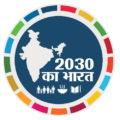In an era of unprecedented growth and industrialization, the harmony between sustainable development and environmental conservation has become a critical concern. Sustainable development envisions a world where economic progress meets the needs of the present without compromising the ability of future generations to fulfill their own. Environmental conservation ensures that the planet’s resources and ecosystems remain intact for this vision to be realized. Together, they form a symbiotic relationship that is crucial for the survival of humanity and the planet.
What is Sustainable Development?
Sustainable Development Goals (SDGs) were introduced by the United Nations in 2015 as a universal call to action for eradicating poverty, ensuring good health, promoting quality education, and combating climate change. These 17 goals emphasize balanced progress in economic, social, and environmental dimensions. Among these, environmental conservation emerges as the foundation for achieving several SDGs like climate action, clean water and sanitation, and life on land.
Why is Environmental Conservation Essential for Sustainable Development?
- Resource Preservation
Conservation ensures the protection of natural resources like forests, water bodies, and soil. Without this, achieving goals like zero hunger and clean water and sanitation becomes impossible. - Climate Resilience
Sustainable development heavily depends on mitigating the adverse effects of climate change. Environmental conservation helps in carbon sequestration, maintaining biodiversity, and preventing extreme weather conditions. - Economic Growth
A degraded environment can lead to economic instability. Industries like agriculture, tourism, and fisheries depend directly on healthy ecosystems. Protecting these ensures decent work and economic growth. - Health and Well-Being
Clean air, water, and food are non-negotiable for human health. Conserving the environment eliminates pollutants and supports SDG 3 (Good Health and Well-Being).
Key Intersections Between Sustainable Development and Environmental Conservation
1. Renewable Energy and Reduced Emissions
Transitioning to affordable and clean energy sources like solar, wind, and hydropower reduces greenhouse gas emissions, directly aligning with climate action and ensuring sustainable industrial practices.
Example: India’s National Solar Mission has significantly contributed to reducing carbon emissions while providing clean energy to rural and urban areas alike.
2. Water Management
Access to clean water and sanitation (SDG 6) is vital for sustainable living. Conservation efforts like watershed management and reducing industrial water wastage play a crucial role.
Example: Community-driven water conservation projects in Rajasthan have turned arid lands into fertile regions.
3. Sustainable Agriculture
Practices like crop rotation, organic farming, and agroforestry not only improve soil fertility but also align with SDG 2 (Zero Hunger) by ensuring long-term food security.
4. Protecting Biodiversity
Biodiversity is critical for ecosystem services, including pollination and nutrient cycling. Conservation efforts support life on land (SDG 15) and life below water (SDG 14), ensuring ecological balance.
Example: The Sundarbans mangrove forests act as natural barriers against cyclones and support livelihoods through sustainable fishing.
Challenges in Aligning Sustainable Development and Environmental Conservation
- Economic Pressure: Rapid industrialization often prioritizes short-term economic gains over long-term environmental health.
- Lack of Awareness: Limited understanding among communities about the importance of conservation slows progress.
- Policy Gaps: Weak regulations or lack of enforcement undermines efforts to balance development with conservation.
- Overpopulation: Increasing population demands strain natural resources, leading to deforestation, overfishing, and pollution.
The Role of 2030kabharat in Balancing Development and Conservation
2030kaBharat is committed to addressing the challenges of sustainable development while ensuring environmental conservation. Through targeted initiatives, the organization aims to:
- Promote clean energy adoption in rural and urban areas.
- Conduct workshops on sustainable practices like waste management and water conservation.
- Collaborate with industries to reduce environmental footprints.
- Launch awareness campaigns focusing on climate action and responsible consumption and production.
By aligning its goals with Sustainable Development Goals, 2030 का भारत ensures that development progresses without harming the planet.
How Individuals Can Contribute
- Adopt Green Practices: Reduce, reuse, and recycle to minimize waste.
- Support Renewable Energy: Shift to solar panels or energy-efficient appliances.
- Plant Trees: Contribute to afforestation efforts to enhance biodiversity.
- Educate and Advocate: Raise awareness about the importance of environmental conservation.
- Practice Sustainable Consumption: Opt for eco-friendly products and reduce single-use plastics.
The Way Forward
- Policy Integration: Governments must integrate sustainable development and environmental conservation into all policies and frameworks.
- Public-Private Partnerships: Collaboration between corporations, governments, and NGOs can amplify efforts.
- Technology and Innovation: Harnessing technologies like AI and IoT can optimize resource use and track conservation efforts.
- Community Involvement: Grassroots participation ensures that local needs are met sustainably.
Conclusion
The interplay between sustainable development and environmental conservation is the cornerstone of a thriving future. Achieving this balance requires collective effort from individuals, industries, and governments. With initiatives like 2030kabharat, which focus on SDGs such as no poverty, clean water, gender equality, and climate action, India is taking significant steps toward a sustainable tomorrow.
Every action counts—be it conserving water, reducing waste, or supporting sustainable practices. Together, we can create a world where development and conservation go hand in hand, ensuring a better planet for generations to come.

